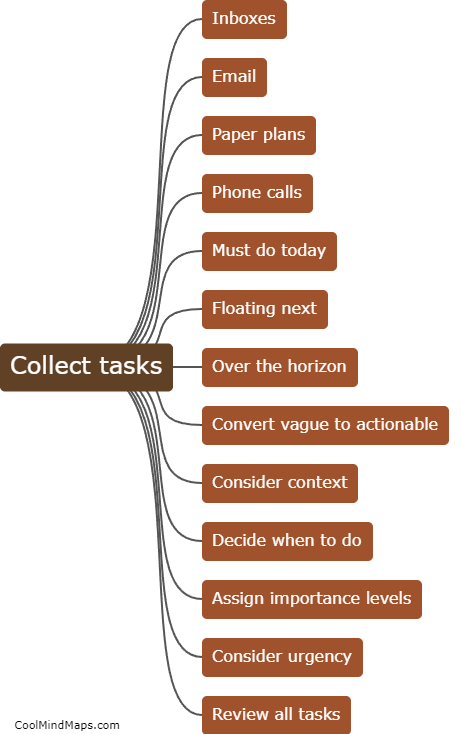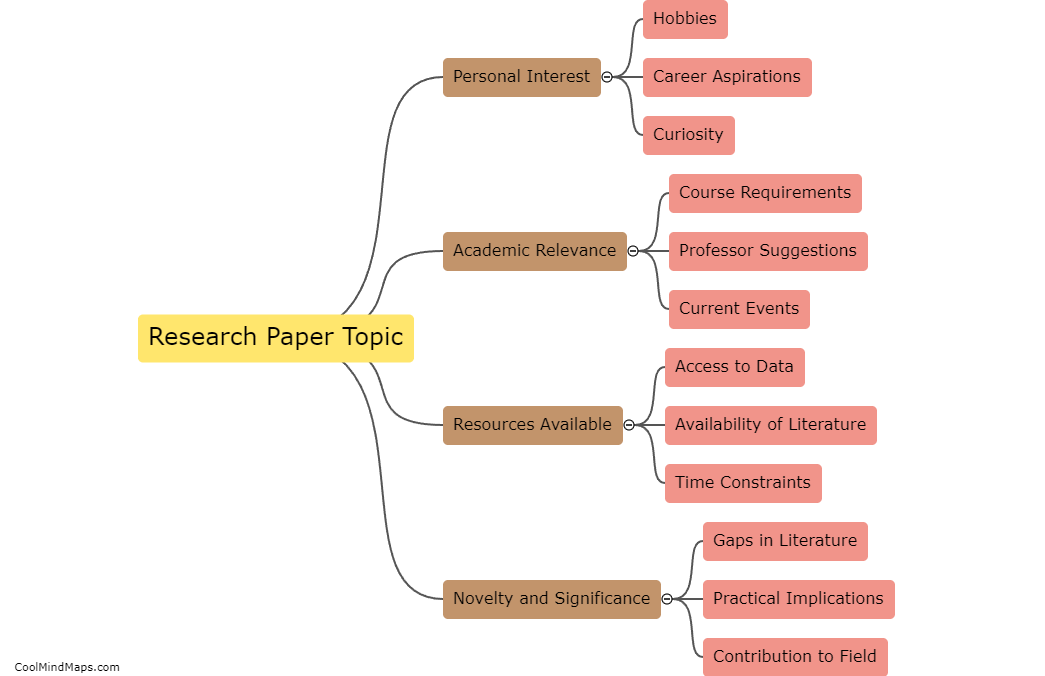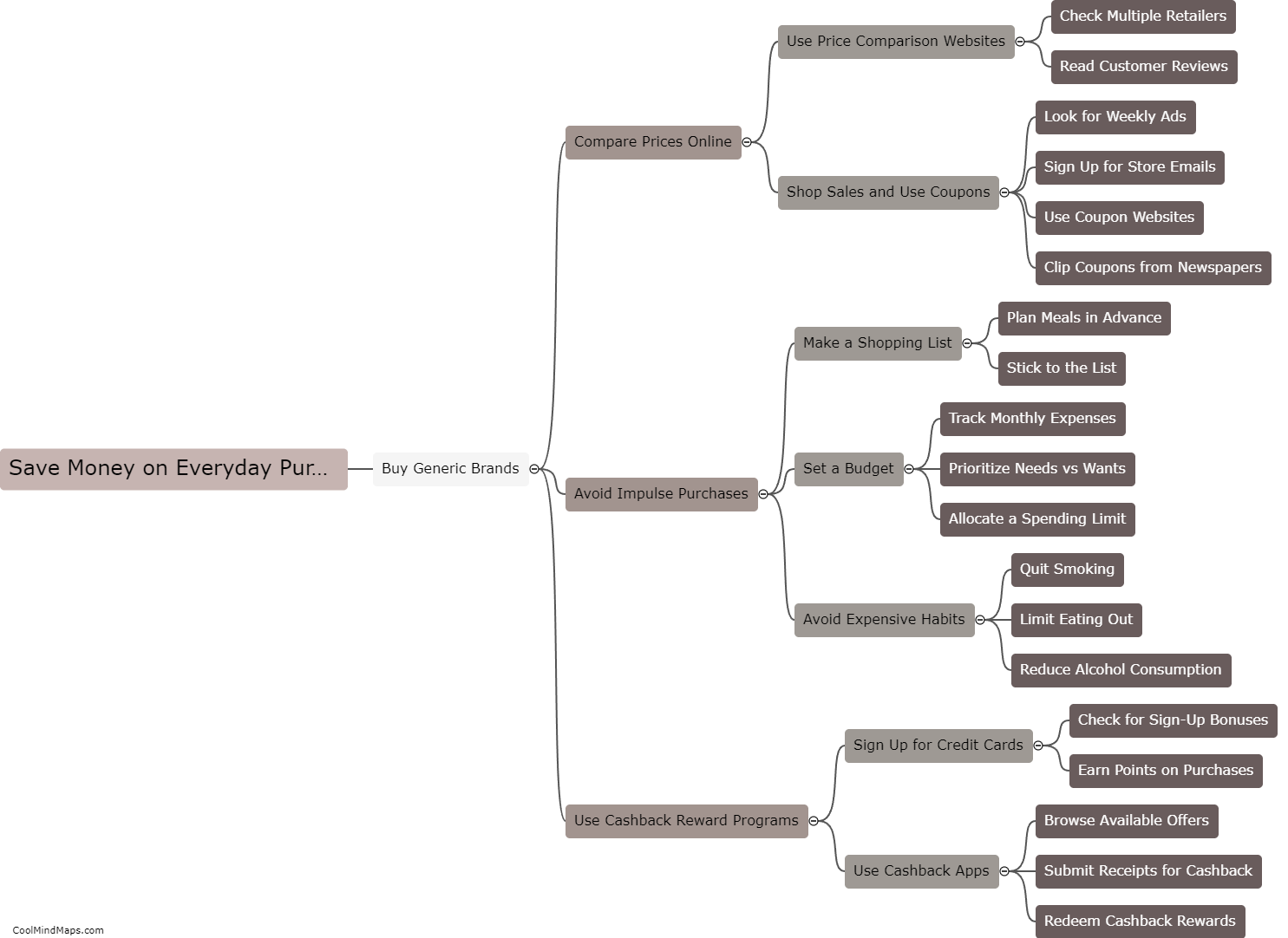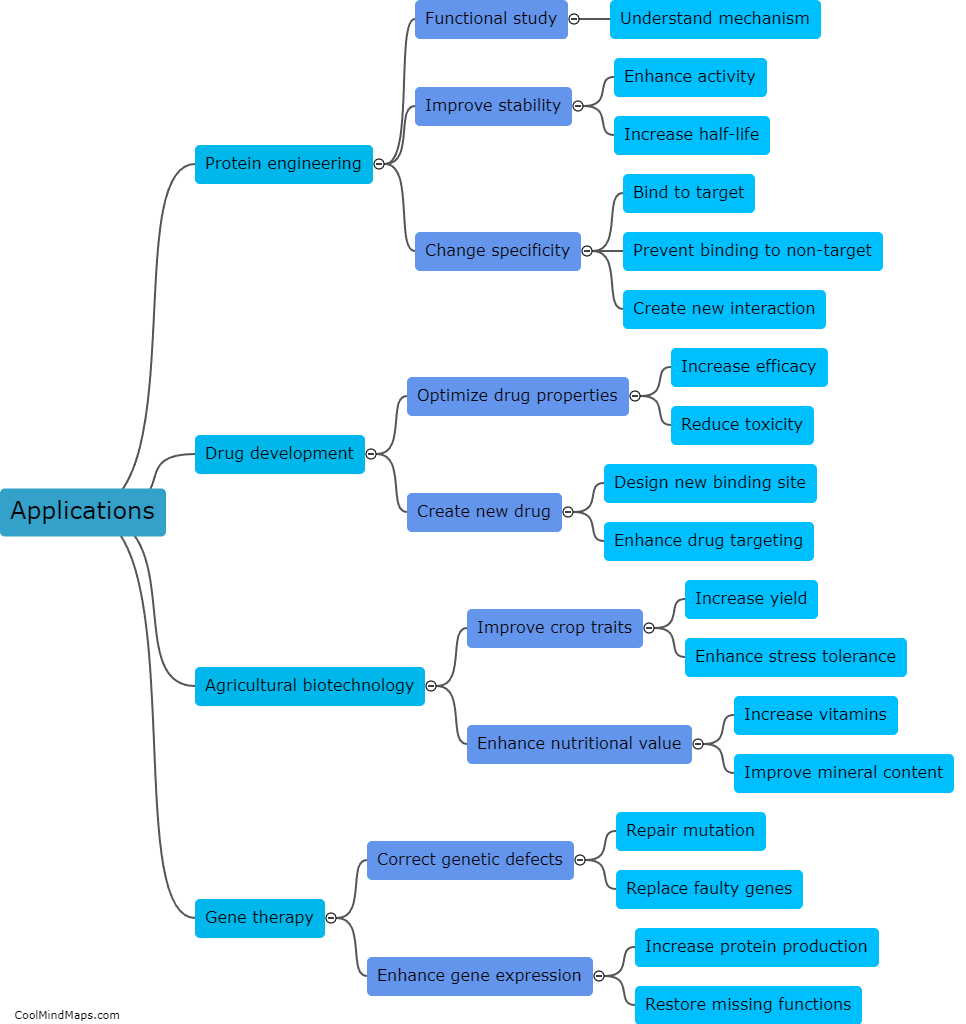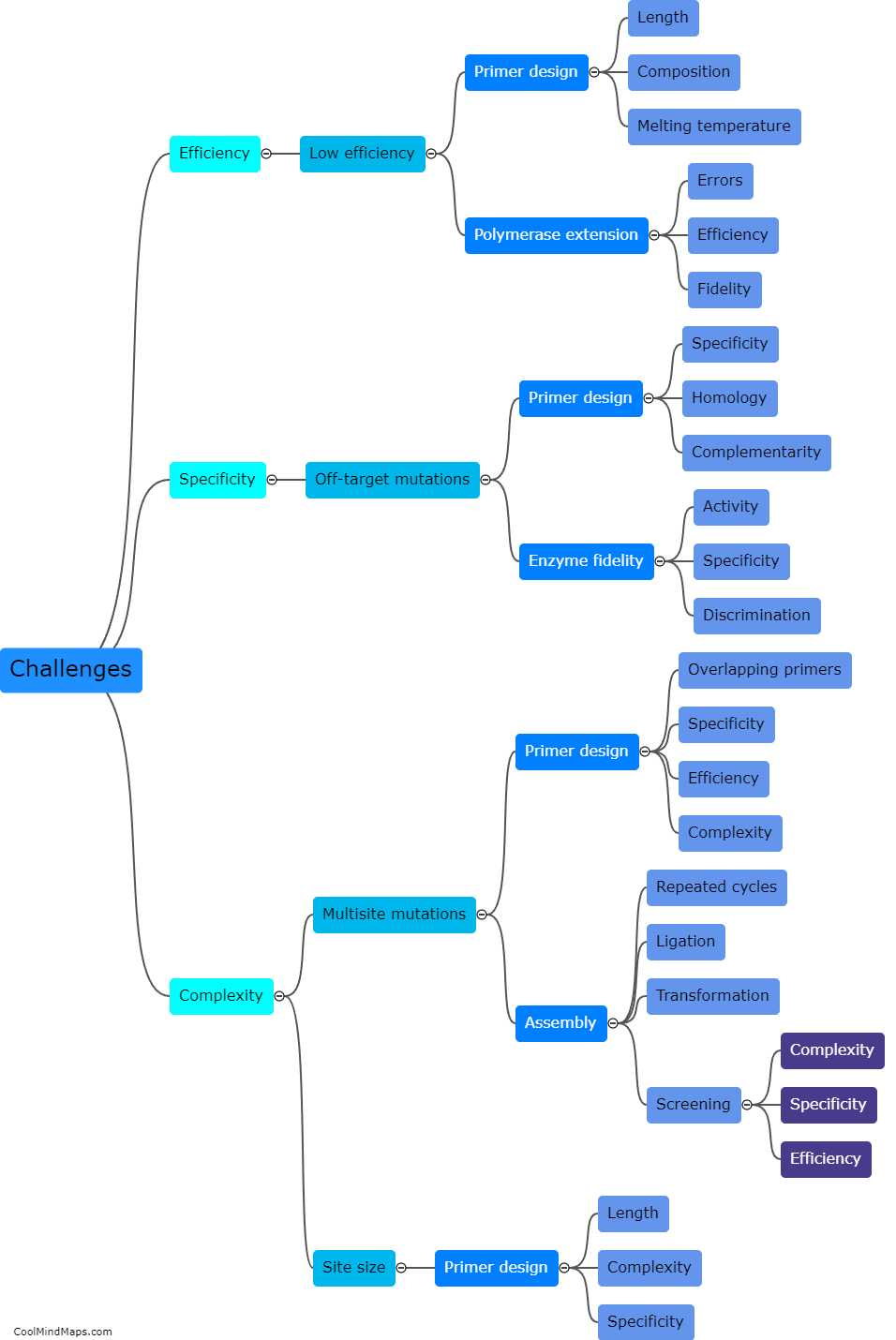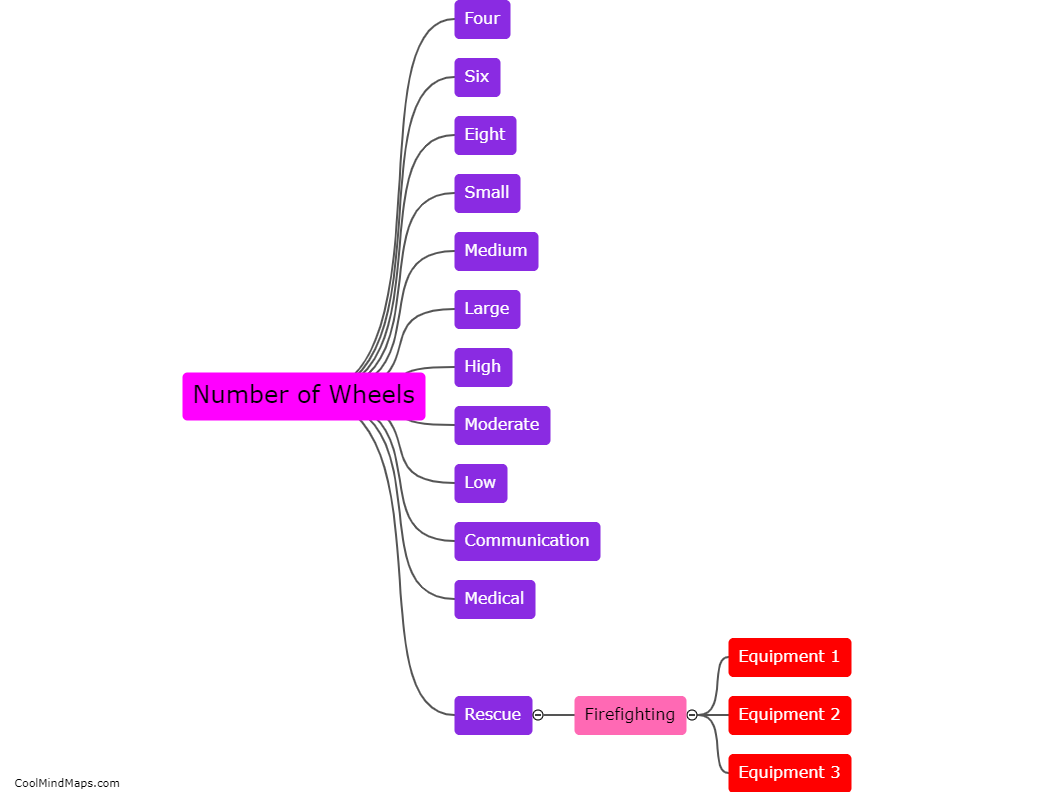How does site directed mutagenesis work?
Site-directed mutagenesis is a laboratory technique used to introduce specific, targeted changes in a DNA sequence. It involves designing a short synthetic DNA fragment containing the desired mutation, which is then used as a primer in a PCR reaction. This primer attaches to the template DNA, and during the DNA replication process, the mutated fragment is incorporated into the newly synthesized DNA strands. The products of this reaction are then transformed into a host organism, such as bacteria, allowing the mutated DNA sequence to replace the wild-type sequence in the genome. Site-directed mutagenesis has revolutionized genetic research by enabling scientists to investigate the functional consequences of specific mutations and their role in various biological processes.

This mind map was published on 26 November 2023 and has been viewed 118 times.
